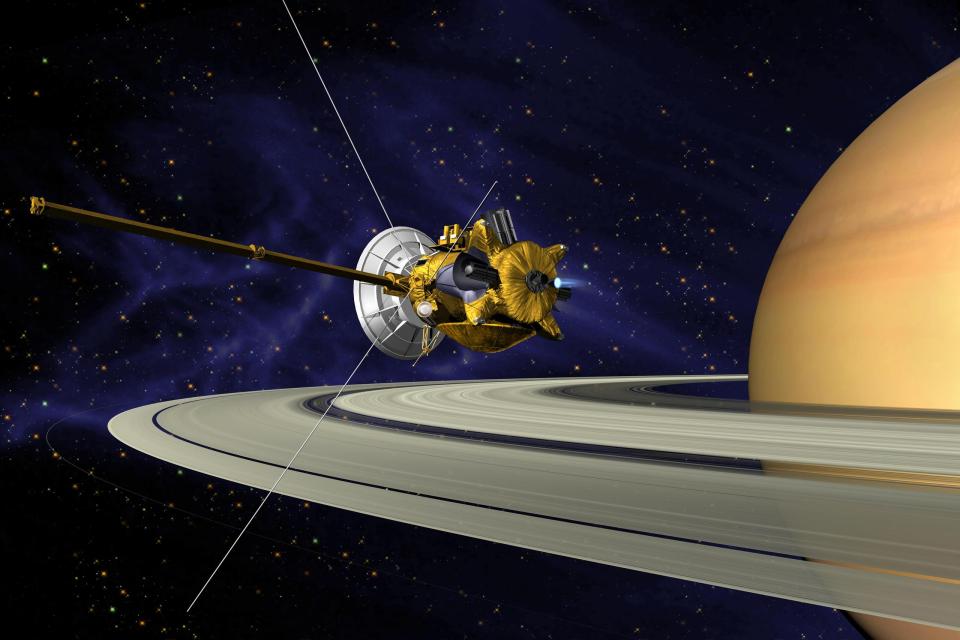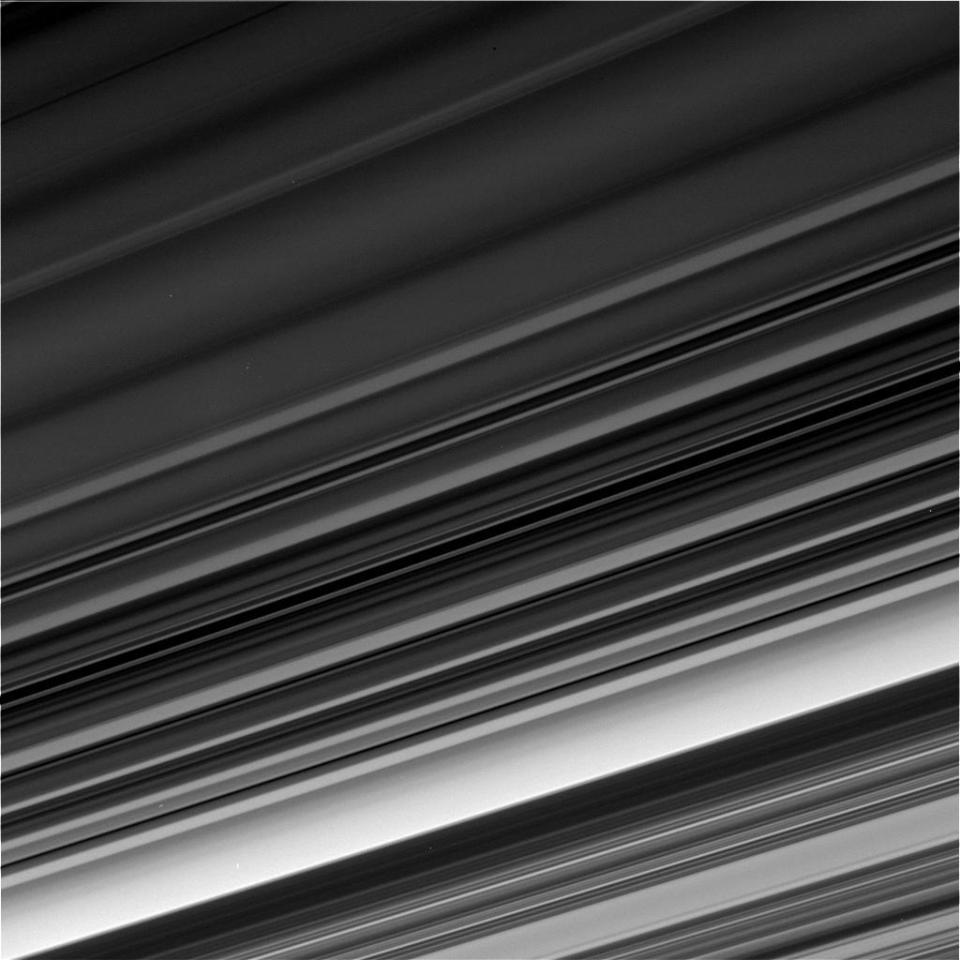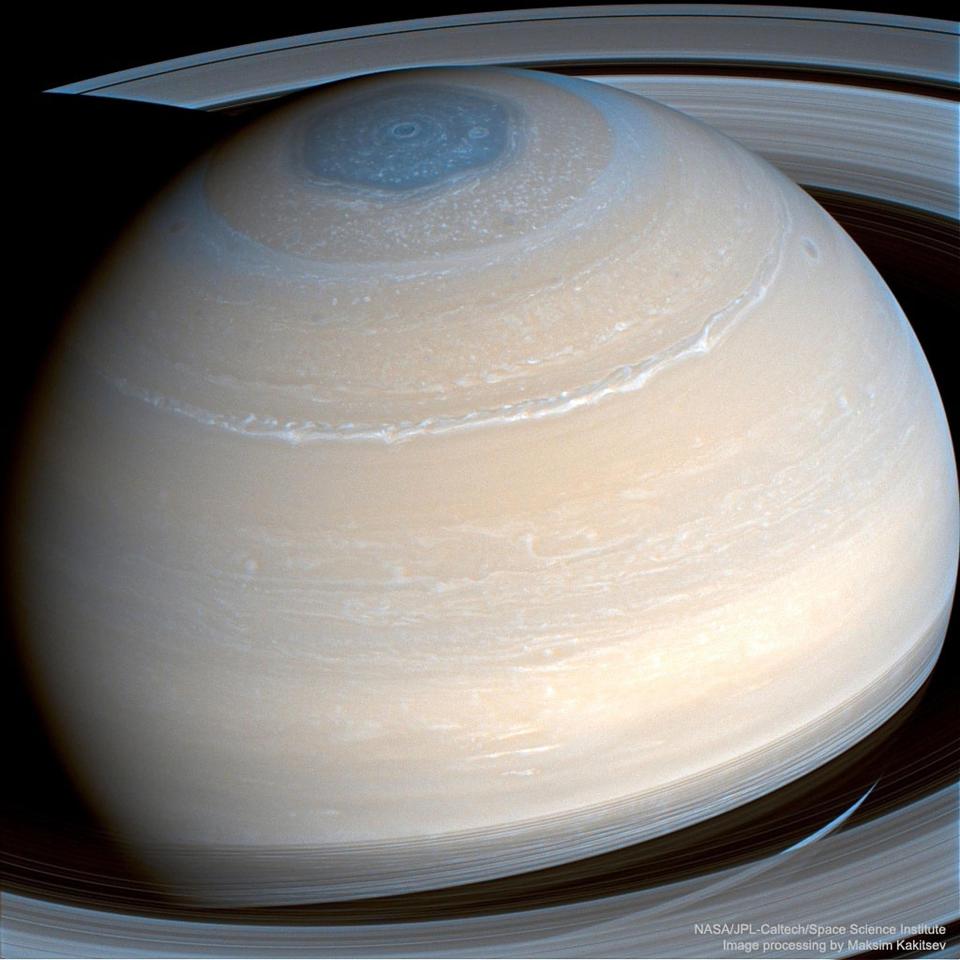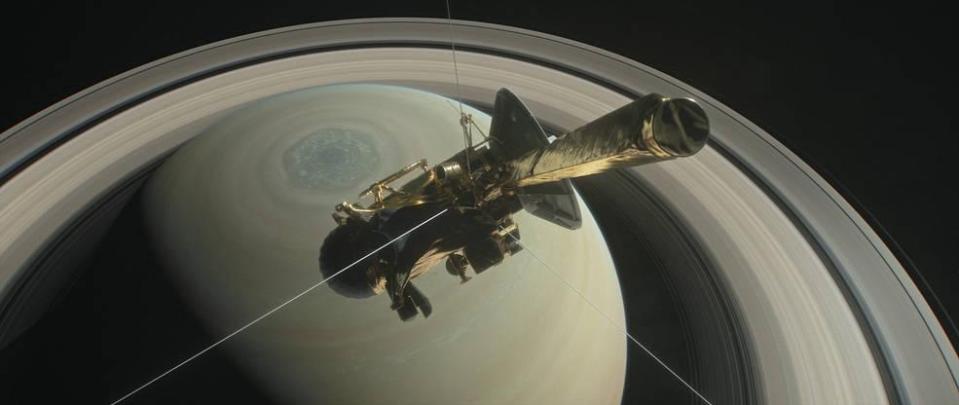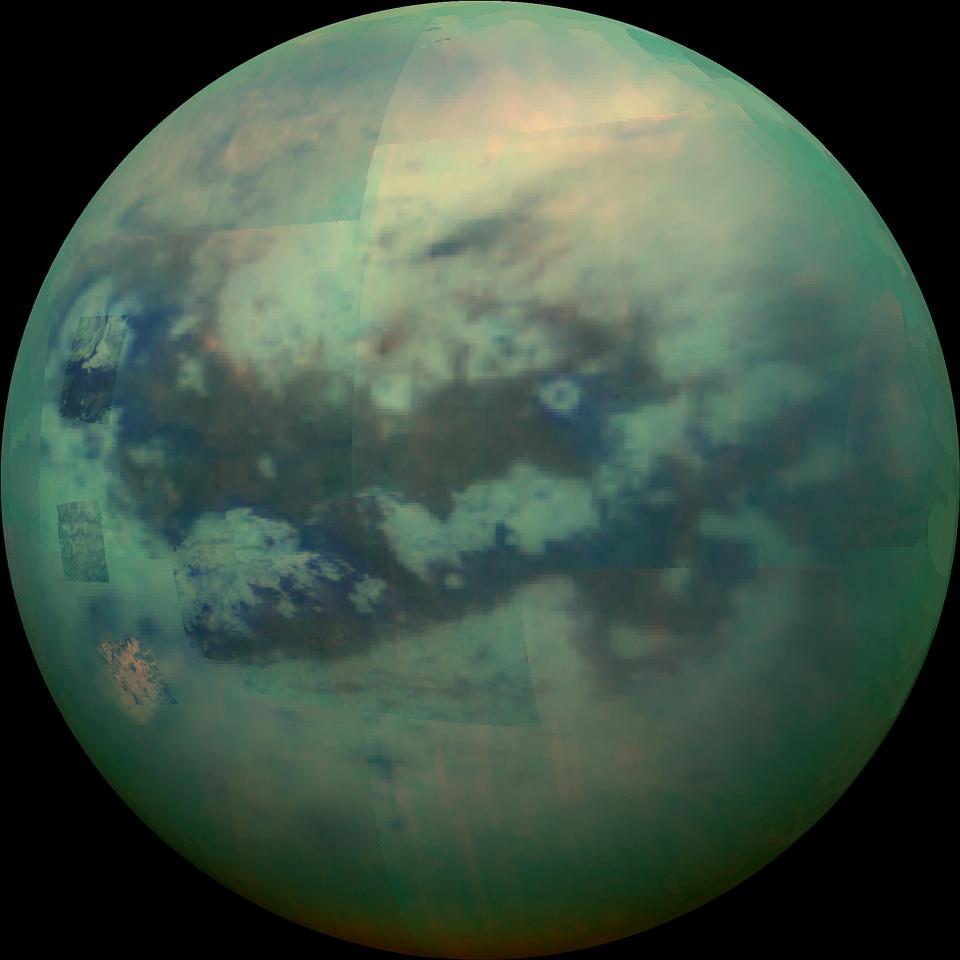Nasa’s Cassini probe explodes in Saturn’s atmosphere after performing ‘Grand Finale’ death dive
The plucky probe met its end after plunging directly into the atmosphere of the ringed world

NASA'S Cassini spacecraft has exploded in Saturn's atmosphere, the space agency has announced.
It broke off contact with Earth before Nasa later announced it had burned up after entering the atmosphere.
Radio contact with the 22ft long nuclear-powered probe was lost at at 12.56 pm UK time as Cassini tumbled to its doom 930 miles above Saturn's cloud tops.
Plummeting at 77,000mph, is disintegrated into fragments within seconds and burned up.
Mission controllers at Nasa's Jet Propulsion Laboratory in Pasadena, California, clapped and hugged each other when the signal loss was confirmed.
Project manager Earl Maize said: "Congratulations to you all. This has been an incredible mission ... you're all an incredible team."
The decision to kill off Cassini was taken because the craft would soon run out of fuel and become impossible to steer.
Scientists feared a collision with Titan or Enceladus, two of Saturn's moons that in the past 10 years have shown a potential to host simple life.
Safe disposal of Cassini was seen as the best way to avoid the remote possibility of contaminating the pristine moons with Earth bugs.
On its Facebook page, Nasa said: "Cassini is now part of the planet it studied for more than a decade."
The spacecraft was launched from Cape Canaveral, Florida, in 1997 and took seven years to reach Saturn.
It was originally intended to explore the planet and its moons for just three years.
In the end, its life was extended by another decade.
The space mission is regarded as one of the most ambitious and successful ever undertaken.
For some scientists, including a large team from the UK, it has taken up whole careers.
One of Cassini's most important discoveries was the existence of a massive watery ocean under the icy surface of Enceladus that could conceivably harbour life.
A European Space Agency probe carried by the orbiter, called Huygens, made headlines around world when it landed on Saturn's largest moon Titan in January 2005.
Together Cassini and Huygens showed Titan to have a startlingly Earth-like landscape, with rivers, lakes and seas filled with liquid methane and ethane.
Scientists believe Titan's "pre-biotic" environment could also support life, but not necessarily as we know it.
Cassini has also discovered seven new moons, six of which have been named, observed raging storms on Saturn, and shed new light on the planet's famous rings.
The space craft's fate was sealed on September 11 when it was sent on a final fly-by of distant Titan, 760,000 miles from Saturn.
Titan's gravity nudged it onto a course back to Saturn from which there would be no return. Scientists nicknamed it the "goodbye kiss".
Right up until it radio contact was lost Cassini was sending back data to Earth in near-real time.
The last images of looming Saturn were captured by the probe several hours earlier as it headed towards the planet.
For a brief time Cassini's instruments sampled gases and molecules from Saturn's atmosphere, transmitting data that could not be obtained by remote sensing alone.
Buffeted by strong winds, the probe fired its attitude thrusters to maintain stability.
Cassini struggled on for about a minute longer than forecast but when its dish antenna failed to lock onto Earth, radio contact was lost.
Because of the length of time it takes radio waves to cross the enormous gulf between Saturn and Earth, mission controllers only confirmed signal loss 83 minutes after it happened.
By then, Cassini had already been turned into a fireball and vaporised.
Royal Astronomical Society president Professor John Zarnecki, who worked on
Cassini/Huygens for more than 20 years, said: "Of course I feel slightly sad. But it's given me the most wonderful ride and it delivered my instrument to the surface of Titan where it's still sitting."
A HEAVENLY VIEW Nasa Cassini probe snaps last incredible pictures of Saturn before today’s ‘Grand Finale’ death dive into the planet
"It has shown Titan to be even more wonderful than we had ever imagined - we've seen seas and lakes and rivers and dune fields and clouds and rain and more.
"The data we collected is unlikely to be bettered for many decades to come. The mission has not only been a wonderful scientific success but has also shown what can be achieved when scientists and engineers from across the world can work together with a common purpose to realise lofty goals."
So what's next for Nasa?
"We've left the world informed but still wondering," Maize said earlier this week. "We've got to go back. We know it."


